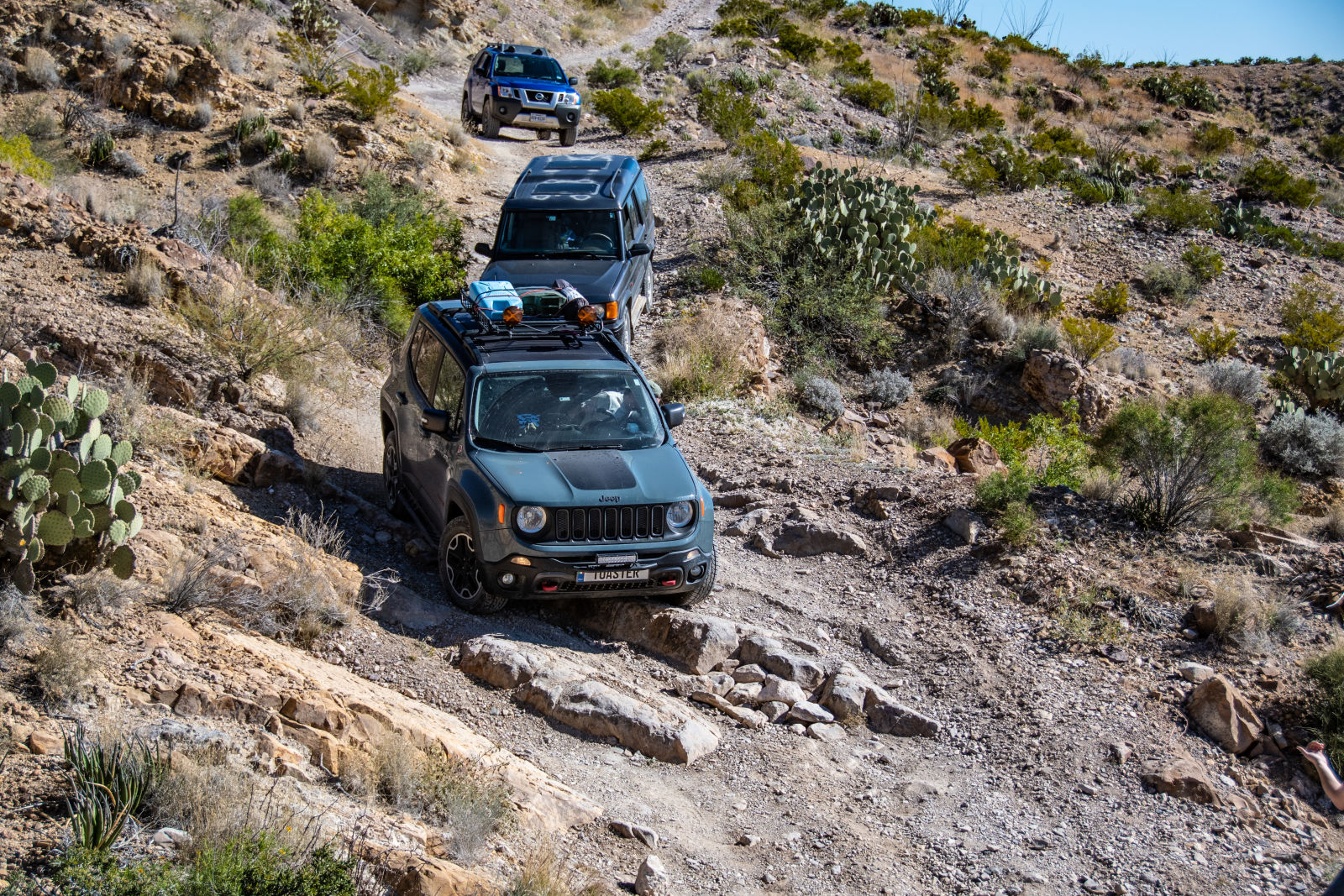My last version of this was popular enough, I figured now is a good time for an update. For our trip to Big Bend we got our usual cast of characters together for another round of trail bashing. But which do we think did the best? Well… read on to find out!
This time we’ll go newest to oldest:
2016 Jeep Renegade Trailhawk

Driver’s Name: George
Engine: 2.4L 4-cylinder Tigershark MultiAir 2; 180 hp @ 6400RPM, 175 lb*ft @ 3900 rpm
Transmission: 9-Speed ZF 948TW automatic
Transfer case: None
Crawl Ratio: 20:1
Ground Clearance: 8.7”
Offroad toys: Trailhawk package, Jeep Selec-terrain traction control
Modifications: Aftermarket rock rails, aftermarket roof basket, offroading lights, larger than stock AT tires
The Renegade isn’t substantially different from the last time I did one of these. A few more miles and a more experienced driver, but that is it. George did get some new spotlights for Christmas and managed to mount them in the first few days of the trip.
Lets get it right out there: The Renegade did surprisingly well. Where it didn’t have the articulation for the job, it made up for it with really, really good traction control. I don’t think I’ve ever seen it up on two or three wheels more than I did on this trip.
Seriously, this thing was like an over-hydrated dog out for a long walk.
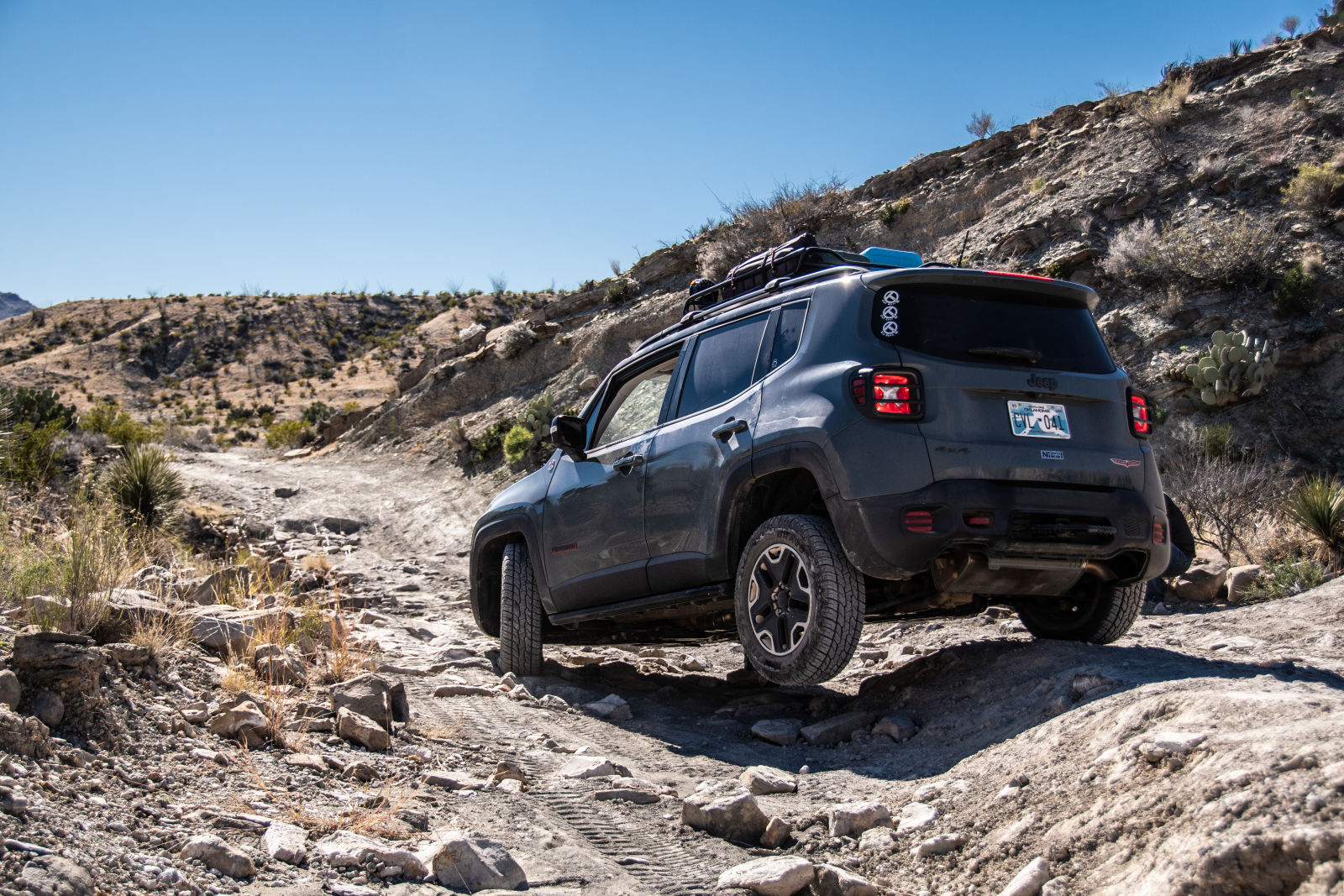
The little Renegade powered up the step at Black Gap better than its seemingly much better suited companions. The only time it really got stuck was when George intentionally chose a harder line for the lulz.
When the Renegade does get stuck, it is usually due to low clearance or lack of power. Despite its generous 8.7” ground clearance, loading down the Renegade with tools, equipment, and camping gear lowers that to an almost unacceptable level. Going up a steep, slippery grade the Renegade’s lack of low gearing shines through as it’ll often just refuse to go forward, requiring the driver to back up and choose a different line.
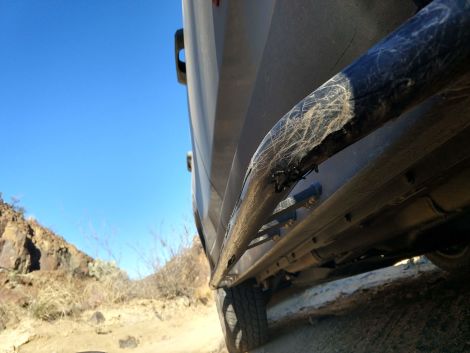
The biggest problem with the Renegade both on and off-road, by far, it its gas tank. At as pathetic 12.7 US gallons, the Renegade had a serious case of range anxiety off-road, necessitating fuel stops at least once a day, usually when the XTerra and Discovery were above half a tank. My credit card statement is a never-ending stream of fuel stops that really highlights this weakness in the Renegade.
Additionally, this particular Renegade benefited from aftermarket rock rails, which saved its bacon more than once on this trip. In fact, the bashing these things took on Black Gap have both Taylor (XTerra) and I (Disco) shopping for then for our vehicles.
Damage: Paint damage to rock rails
2015 Nissan XTerra Pro4X
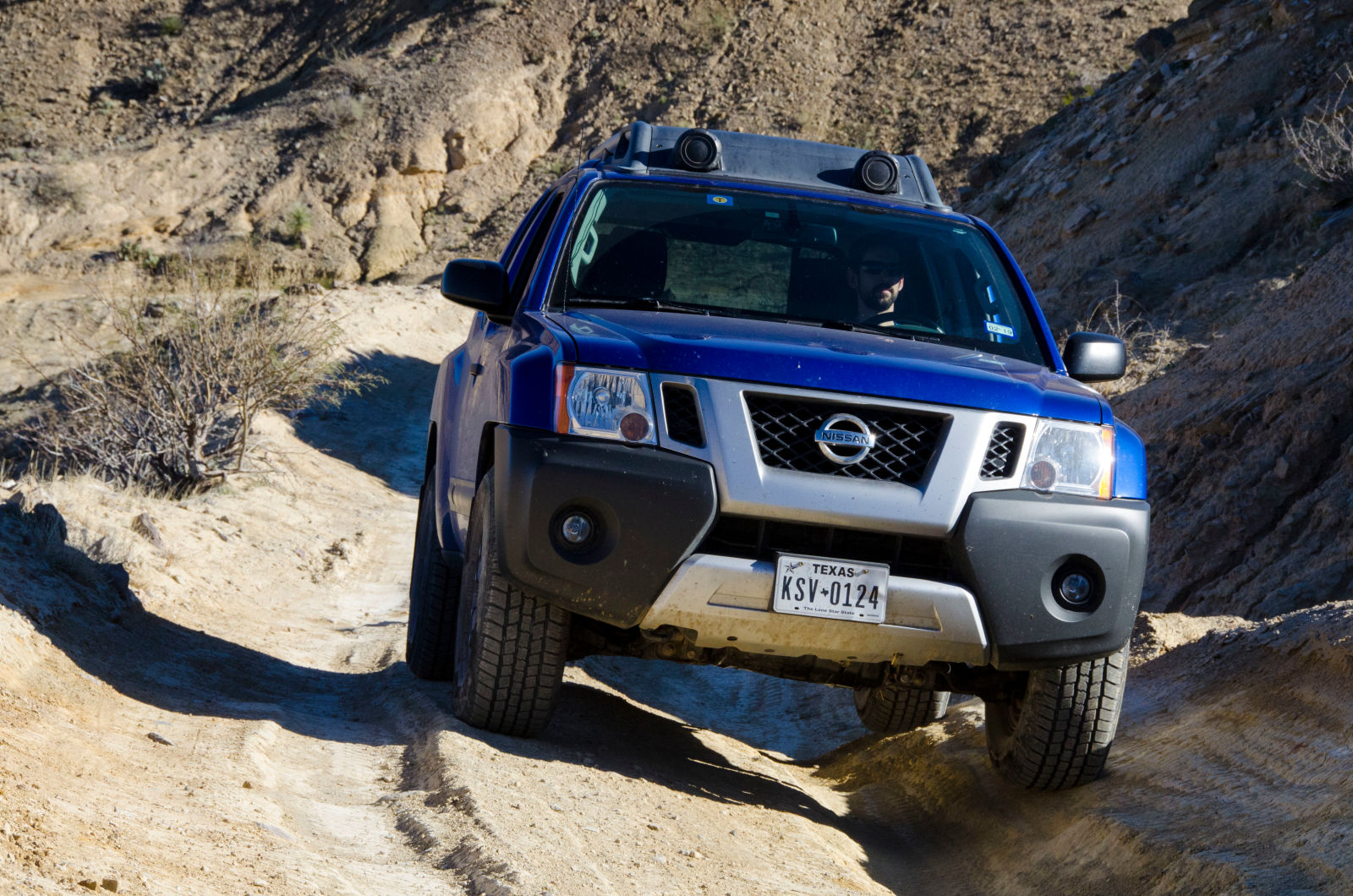
Driver’s Name: Taylor
Engine: 4.0L VQ40DE V6; 261 hp @ 5,600 RPM, 281 lb-ft @ 4,000 RPM
Transmission: 6-Speed Manual Transmission
Transfer Case: 2.625:1 2-speed transfer case
Crawl Ratio: 43:1
Ground Clearance: 8.9”
Offroad toys: Pro4X package, Factory rear differential locks
Modifications: None
The XTerra returns to us again pretty much exactly as before but with a lot more miles and a few new squeaks and rattles. Taylor has been driving the wheels off this thing since he bought it right before OAT East in April, and good on him for it!
As with OAT, the XTerra doesn’t seem very bothered by all the trail driving business. The only times it either looked or was actually challenged were results of driver error, but we’ll get to that later. Further, Taylor has had this thing for less than a year and has put over 20,000 miles on it, so to say it is comfortable to drive might be an understatement.
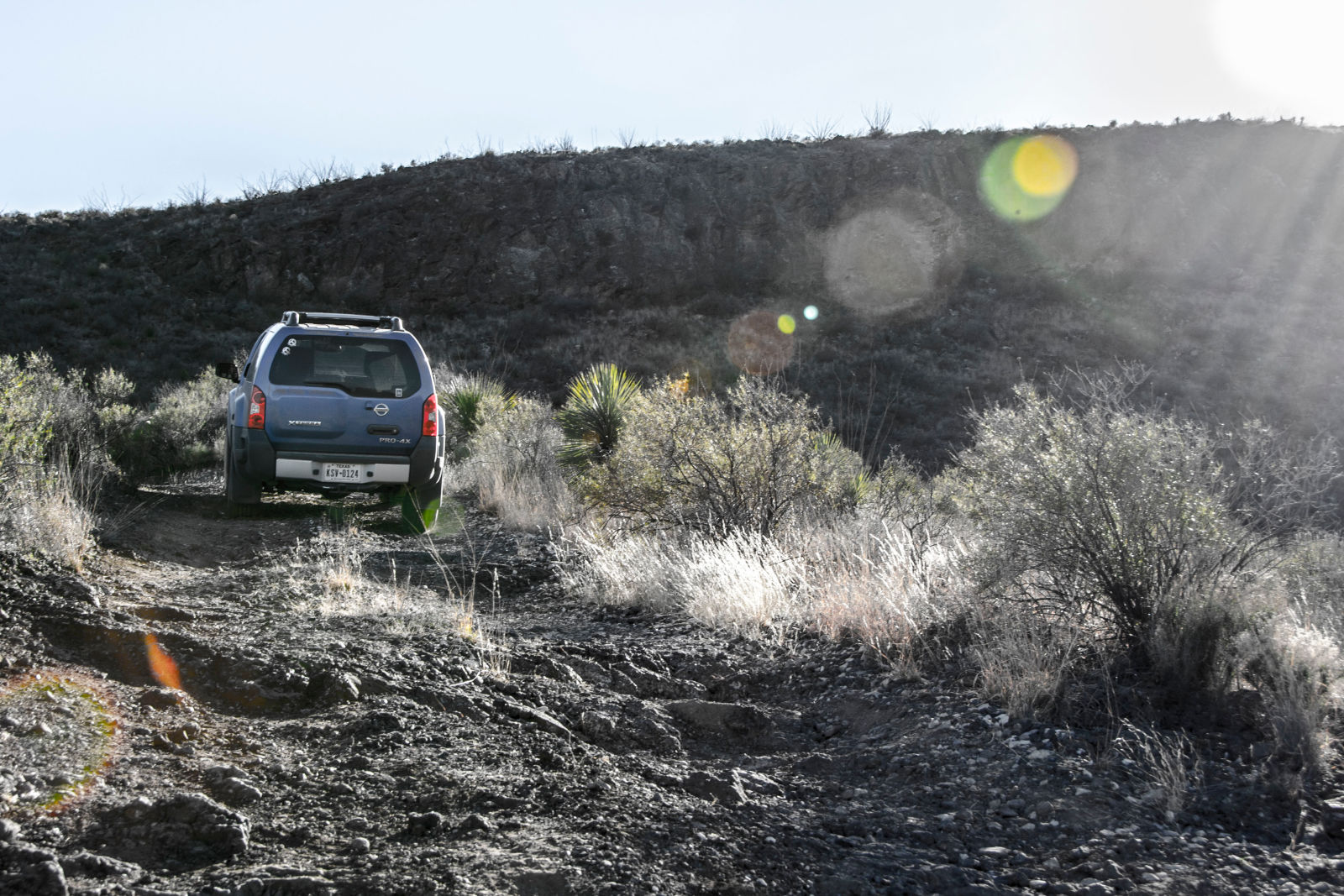
The XTerra benefits from having the tallest ground clearance of the three, solid rear axle, factory rear differential lock, and off-road traction control. It is a good little truck and goes where it is asked without much fuss.
The XTerra got in trouble once or twice on the trip, however. The biggest “OOPS” was when Taylor underestimated the size of an obstacle and attempted to straddle it. (George and I had both gone around, though I’ll admit I didn’t think it was necessary.) This resulted in some damage to his front (plastic) skid plate and his gas tank being in some peril, but no actual damage.
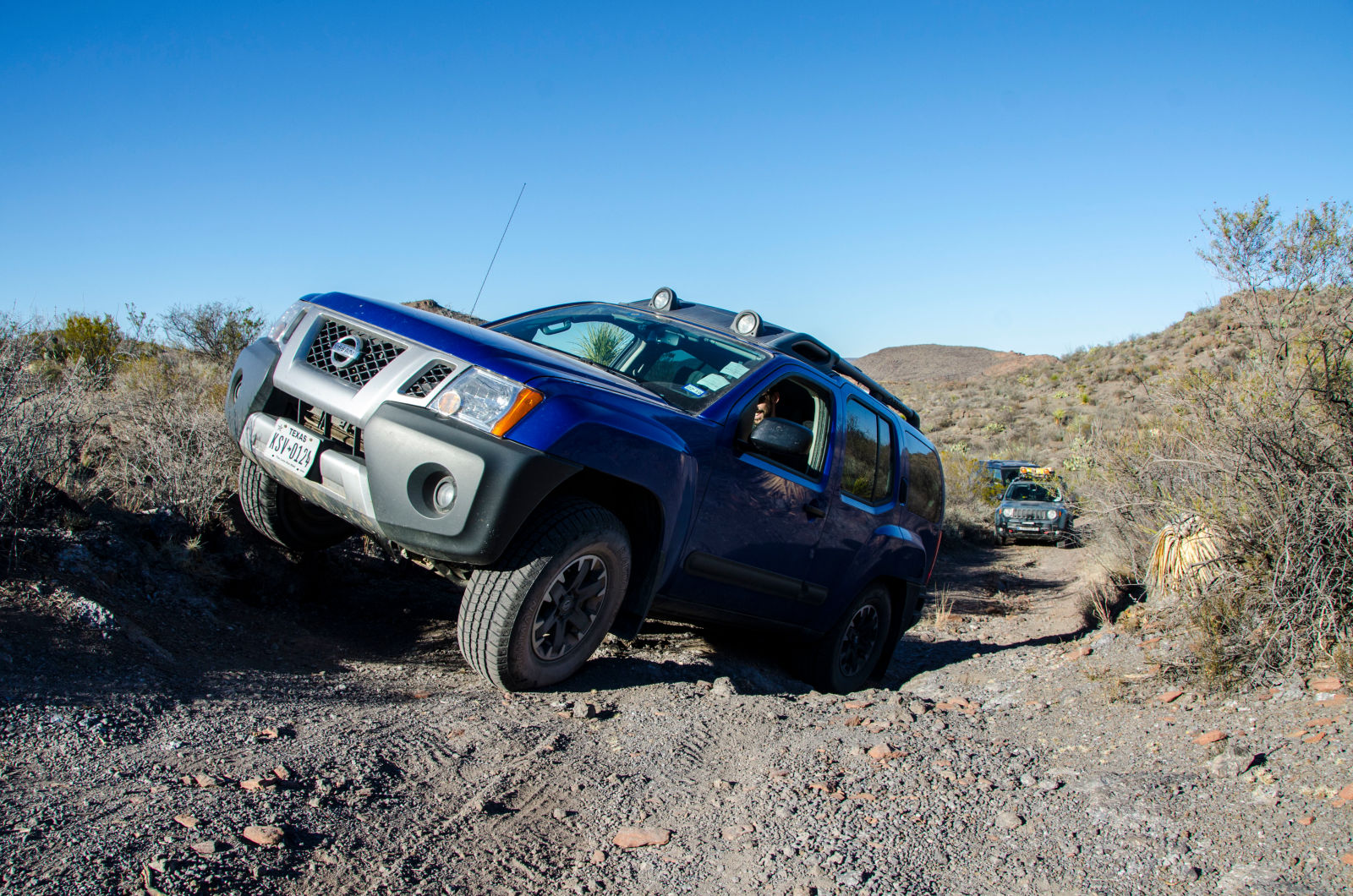
The other problem(s) the XTerra got into were due to its transmission and driver. When navigating complex, steep situations the manual transmission adds an additional layer of complexity that can sometimes be more than a little challenging. While I covet thy neighbor’s manual 90% of the time, on stuff like that I sure am glad to have a torque converter.
Damage: Minor armor damage
2001 Land Rover Discovery II SE7
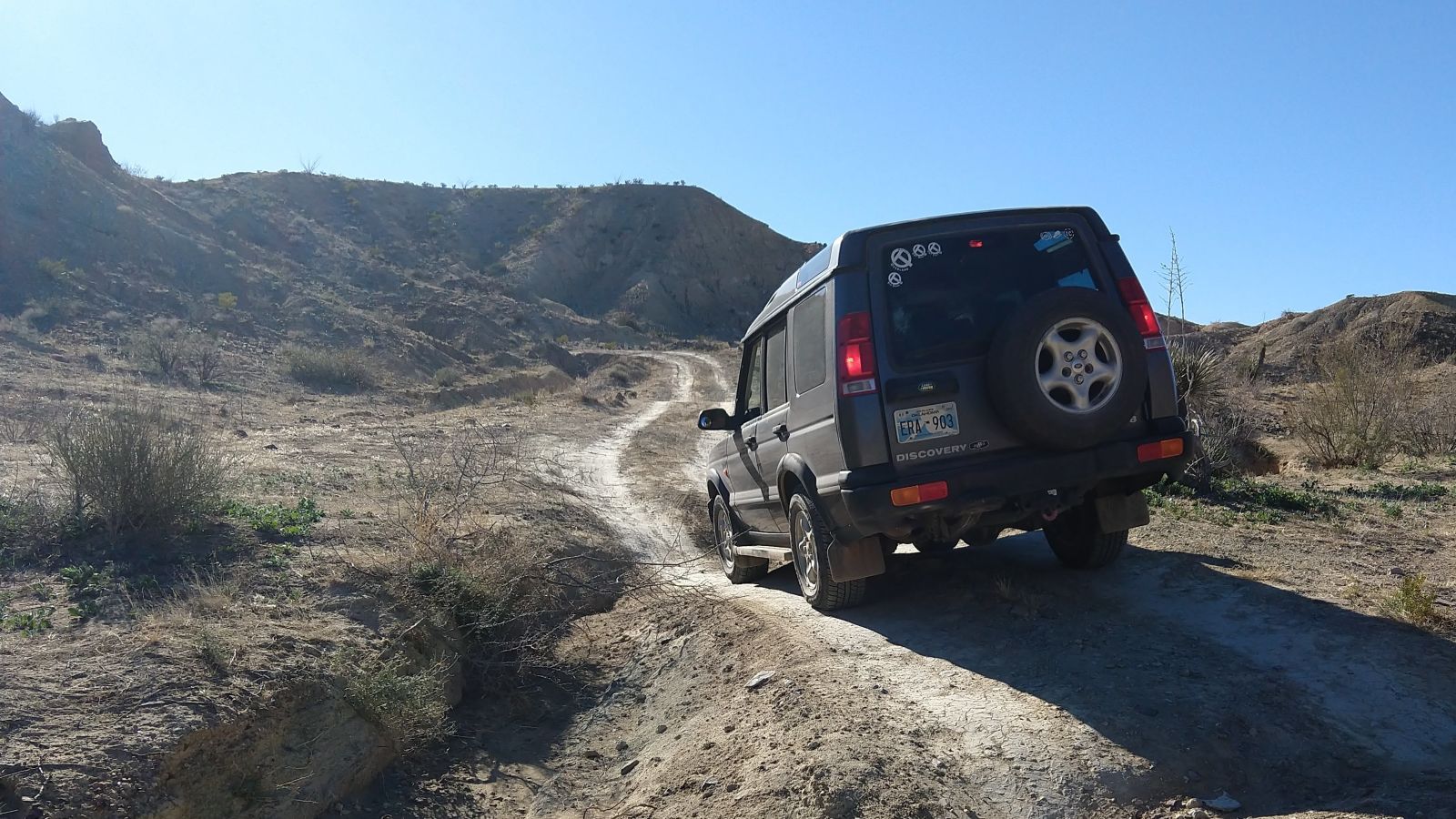
Driver’s Name: Evan/ Akio
Engine: 4.0L Rover V8; 188hp @ 4,750 RPM, 250 lb*ft @ 2,600 RPM
Transmission: 4-speed ZF 4HP22 automatic
Transfer Case: 3.27:1 2-speed transfer case
Crawl Ratio: 29:1
Ground Clearance: 8.2”
Offroad toys: Offroad traction control
Modifications: CDL linkage, disconnectable front sway bar
The Land Rover remains mostly stock, but I’ll say that now fitting with freshly working traction control, a repaired CDL, disconnectable sway bar links, and new shocks on all four corners, the Discovery really felt like it was living its best life.
Like the XTerra, the Discovery trundled along the trails contently, with the occasional resigned sigh when I asked it to do something it would really rather not do. The only vehicle on this trip without extra off-road lights, the Disco’s excellent factory illumination proved adequate for the many hours of wheeling in the dark.
With the front sway bar disconnected and the CDL locked, the Disco was really ready to play. I’ve driven this thing many thousands of miles offroad but never had it feel both as confidant offroad, but also so close to its limits. I even managed to cock a wheel!
Also while we ended up on a lot of tippy trails, the Disco’s aluminum roof, low overall center of gravity, and excellent traversing angle (30 degrees) kept me feeling in control and out of danger.
That said, the sway bar “quick” disconnect was a real pain in the butt to connect and disconnect. The driver’s side linkage is too long to clear part of the suspension, so pry bars, bottle jacks, a hammer, and a lot of swearing are require to manipulate the link back into place. I’m sure it’ll get easier as I get more practice, but I’ll probably email the vendor too to see if they can offer some insight.
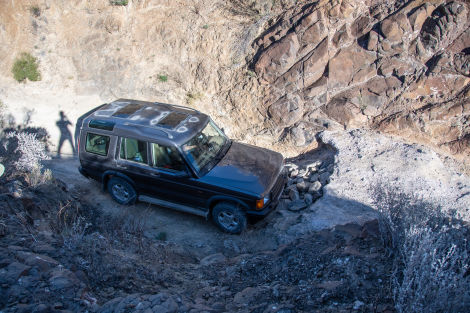
The Disco only really got into trouble on “the step” in Black Gap. You see… as much as I love my Disco it’s departure angle is… lacking. With the air suspension raised and the hitch removed the Discovery II has a stated departure angle of 25 degrees. Well… I do have a hitch and my rear has been converted (heyo) so I must conclude that my D2’s departure is worse than that. The scraping sounds from Black Gap confirm this.
Thankfully a little lost paint was the only damage I incurred thought, except for some financial damage at having to pay resort prices for premium gasoline. The Disco did well and I am appreciative to have the old girl in my life.
Damage: Minor scraping on hitch
Which was best?
Anyone who read my last breakdown knew to be disappointed here.
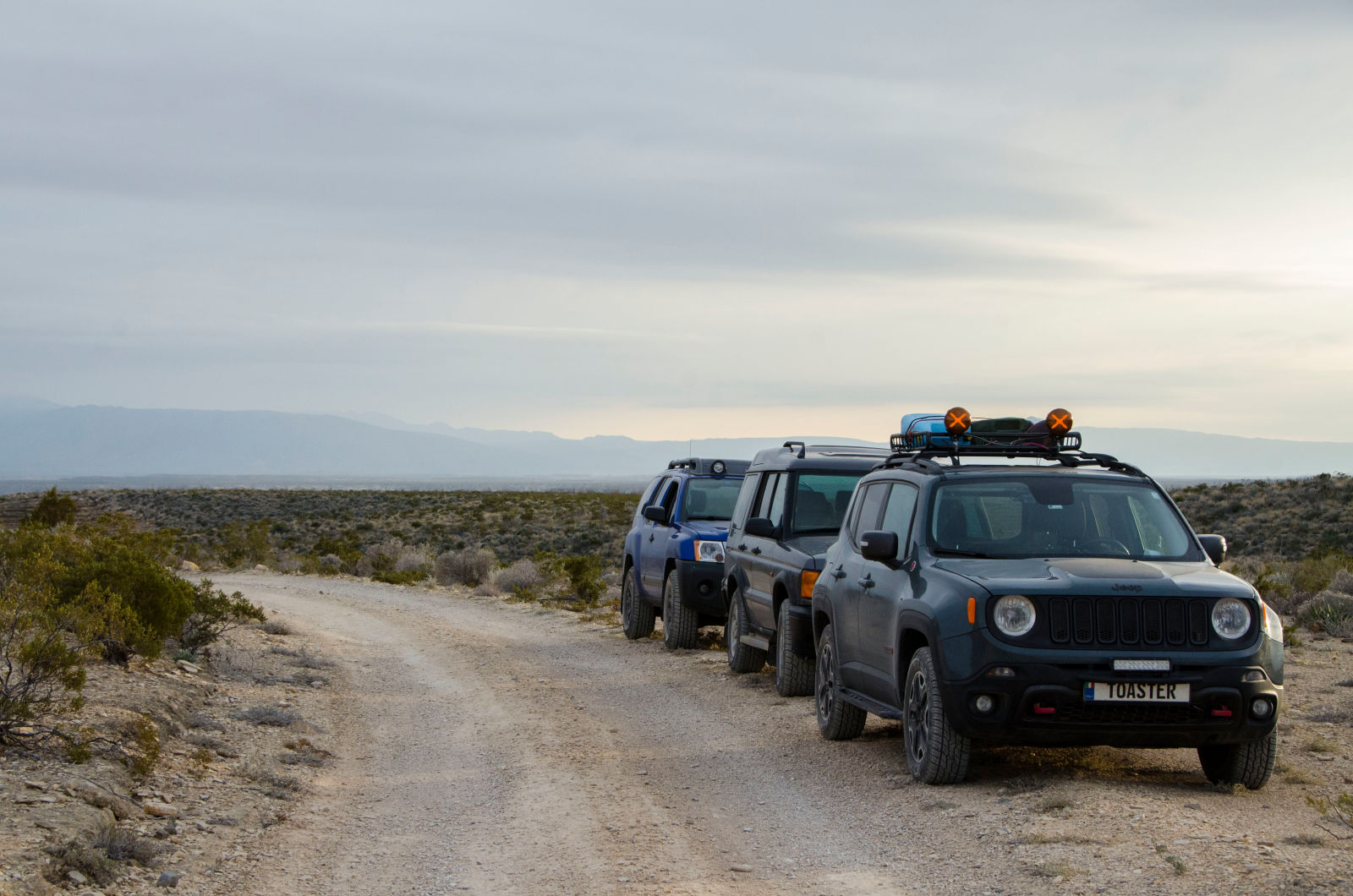
They were all the best.
Which is to say each vehicle excelled in some areas, but lacked in others.
The Renegade’s excellent traction control, narrow profile, and tight turning radius kept it moving forward even when the big boys had to stop and contemplate their lines, but was let down by a tiny gas tank, fully independent suspension, and lack of low gearing.
The XTerra monstered through everything thrown at it, is very comfortable on and off-road, and benefited from a third pedal in all but the toughest situations, but suffered from low front articulation, an inclination for feeling tippy, and control difficulty at low speeds.
Despite having the lowest ground clearance, the Disco’s solid front and rear axles kept it clear of all obstacles while good actuation and traction control kept the power down, but was let down by its width, a weak departure angle, and fussy offroad modifications.
See. All the best.
